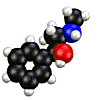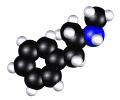|
Whatever
method of cooking Meth is used (please see
Meth Lab section for details), the science remains the same.
Methamphetamine is a synthesized drug – raw materials are combined and put
through a chemical process, resulting in the final product. There are
basic chemical requirements for synthesizing any material: a
precursor, a reagent, a
solvent and a catalyst.
Precursors are the essential chemical for the
production of the drug. There are no substitutions for this component.
Meth’s precursor is Ephedrine. It can be extracted from legal medications
containing pseudoephedrine, most commonly cold and sinus medications.
Reagents are chemicals that react with the
precursor, changing the chemical makeup of the precursor. There are a
number of products used as reagents in Meth production. In the Midwest,
the most widely available and most commonly used item is anhydrous ammonia
from fertilizer.
Solvents are liquids where the chemical operation
takes place. Coleman fuel, starting fluid and methanol are some of the
common solvents used in cooking Meth.
Catalysts are the final requirement for
synthesizing. A catalyst speeds up the reaction process and pushes it
towards greater completion. The catalysts involved in Meth production are
highly dangerous – red phosphorous, lithium or sodium metals and hydrogen.
These
graphics represent the chemical changes in pseudoephedrine, ephedrine and
Meth molecules during synthesizing.
 
 |
